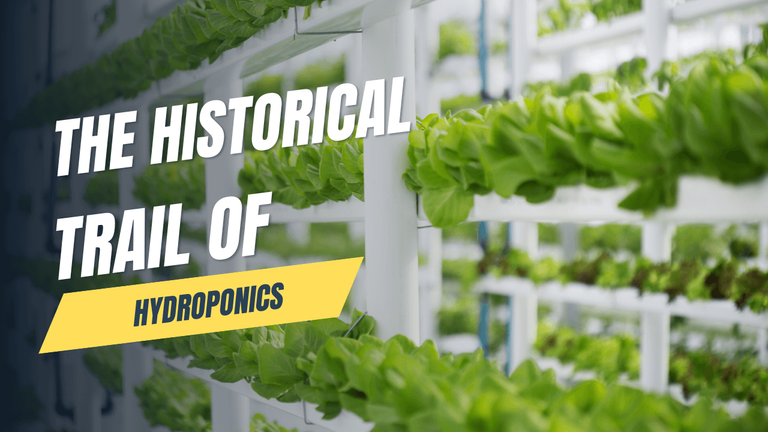
Introduction
Hydroponics, a method of growing plants without soil, has shown intriguing developments throughout its history. From ancient research to modern innovations, this technique has become a vital solution in contemporary agriculture. This article will explore the history of hydroponics from past to present, providing a comprehensive overview of the technology's evolution and its applications in modern farming. However, it is essential to fully understand the concept of hydroponics first.
Discussion
In the ever-evolving world of agriculture, a fundamental question arises: How can plants grow without soil? The history of hydroponics reveals a remarkable story of innovation, research, and human effort to overcome the challenges of food production.
Origin of the Term
Hydroponics comes from the Greek words "hydro" meaning water and "ponos" meaning work. This term was first introduced by German scientist Wilhelm Knop in 1860 to describe the growth of plants in a nutrient solution without soil.
Early Concept
The basic concept of hydroponics has been known since ancient times, particularly in ancient Egypt and China, where plants were grown in water containing natural nutrients, such as river mud or river water.
Early Research in Egypt and China
Ancient Egypt and China were sites of some of the earliest research on soil-less planting methods. Using sub-irrigation techniques and water from the Nile River, the Egyptians effectively grew plants without soil.
Early Modern Research
In the 17th century, scientists like Jan Baptist van Helmont and John Woodward conducted experiments to understand the water and nutrient needs of plants.
Discovery of Plant Nutrients
In the 19th century, research by Julius von Sachs and Justus von Liebig identified the importance of nitrogen, phosphorus, and potassium in plant growth, leading to the development of modern hydroponic nutrient solutions.
Early Commercial Hydroponics
In the early 20th century, hydroponics began to be used commercially in the United States, particularly for vegetable production in urban areas.
Developments During World War II
World War II played a crucial role in the development of hydroponics, where this method was used to ensure a stable food supply for troops in the battlefield.
Technological Advances
During the second half of the 20th century, technological advancements, including the invention of grow lights and automated irrigation systems, increased the efficiency and productivity of hydroponics.
NASA Research
In the 1960s, NASA began researching hydroponics to support agricultural development in space, introducing the concept of "closed systems" that optimize water and nutrient use.
Large-Scale Applications
In the 21st century, hydroponics has been widely adopted in large-scale agriculture, especially in urban areas and environments with limited farmland.
Modern Hydroponics
Sensor technology, automated controls, and remote monitoring have transformed how hydroponics is practiced, allowing farmers to precisely optimize plant growth conditions.
Current Trends and Innovations
With a focus on sustainability and efficiency, current trends in hydroponics include the use of renewable energy, organic waste processing, and the integration of aquaponic systems. From ancient civilizations to the modern era, hydroponics has significantly evolved. From simple home experiments to large-scale industrial applications, this technology continues to innovate. Be sure to explore the various types of hydroponic systems.
Conclusion
By tracing the history of hydroponics, we can understand the importance of innovation in meeting the growing food needs of a changing world. With continually advancing technology and knowledge, the future of hydroponics promises more sustainable and efficient solutions for global agriculture, offering numerous benefits and advantages.
Hello.
There is reasonable evidence that this article is machine-generated. We would appreciate it if you could avoid publishing AI-generated content (full or partial texts, art, etc.).
Thank you.
Guide: AI-Generated Content = Not Original Content
If you believe this comment is in error, please contact us in #appeals in Discord.